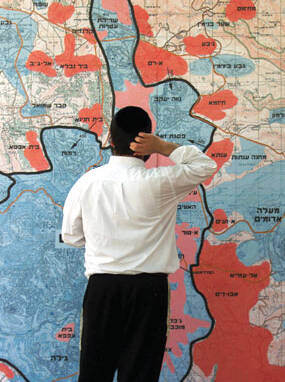According to the Declaration of Principles signed between Israel and the Palestinian Liberation Organization in 1993, five permanent status issues were to be resolved within five years in order to achieve a full peace treaty. Not surprisingly, Jerusalem was one of them.
The deadline to complete these negotiations expired even before the new millennium began. Many consider a viable, mutually respectful, two-state solution to be unattainable and point to Jerusalem as one of the cannot be done reasons.
I beg to differ. Having been an official Israeli negotiator at the so-called Oslo B talks in the mid-1990s and the negotiations held in Taba, Egypt, in January 2001, and a lead drafter of the informal 2003 Geneva Initiative, I am convinced that creative, practical and dignified solutions do exist.
There is insufficient space here to do even minimal justice to the history of Jerusalem before or after 1967. Between 1948 and 1967 the city was divided between Israel and Jordan, and Israel certainly had legitimate complaints regarding the way Jewish sites were treated and the absolute lack of access to them.
When Jews were reunited with their holiest religious sites in the Old City as a consequence of the 1967 war, it was a genuinely emotional and dramatic moment in Jewish and Israeli history. Throughout their exile, Jews had prayed facing Jerusalem; Zion is Jerusalem, and overnight the Zion was back in Zionism.
Yet what followedpart exuberance, part premeditated planning, part making it up as they went alongwas sheer folly on the part of Israel. New municipal boundaries were delineated for Jerusalem, and the city was formally annexed. The annexation included some 30 Palestinian neighborhoods and villages, many of which had never been considered part of al-Quds (the Arabic name for Jerusalem).
Jewish neighborhoods and settlements began to be constructed in occupied Palestinian East Jerusalem. Today they number 13 and are home to approximately 180,000 Israelis. Arab neighborhoods were neglected and largely overlooked when it came to investment and infrastructure. Later, following the September 2000 in-tifada, or uprising, they would be effectively closed off from their Palestinian hinterland, a reality now more visible because of the wall and fence. These roughly 220,000 Palestinian Jerusalemites live in a twilight zone, as permanent residents of Israel but not full citizens.
A Fourfold Issue
To my mind, the point of departure for resolving this issue is fourfold.
First, while recognizing and respecting the religious significance of Jerusalem to Christianity, Islam and Judaism, it is necessary to understand that the conflict is a political one and that the solution will lie in the political realm.
Second, a solution regarding Jerusalem will have to be part of a broader Israeli-Palestinian, two-state agreement, with an Israeli withdrawal based on the 1967 lines. Modifications to the 1967 lines will have to be agreed upon and predicated on a one-to-one land swap. For Jerusalem this means that the Jewish neighborhoods can be part of the future sovereign Israeli territory. The Palestinians would have to be compensated with land elsewhere.
Third, special arrangements would be necessary for the Old City, the center of religious sensitivity. These might include: an international presence and monitoring, regulations on access to holy sites and preservation of cultural heritage, divided or suspended sovereignty and maintenance of the Old City as an open area.
Fourth, in common with the overall framing of an agreement, the Jerusalem provisions will have to guarantee security to the two groups of people and be realistic. The provisions will also need to address the dignity of both Israelis and Palestinians.
We tried to navigate among these various elements in the model Israeli-Palestinian peace treaty known as the Geneva Initiative. Article 6 of that text is devoted to Jerusalem. (It has 13 clauses and can be read on my blog at www.prospectsforpeace.com.)
Two Capitals in Jerusalem
The two states would have their capitals in Palestinian and Israeli Jerusalem respectively. The Haram al Sharif (Temple Mount) would be under Palestinian sovereignty, the Wailing Wall under Israeli sovereignty. The Palestinian East Jerusalemites on their existing territory would be part of the future Palestinian state. There would be dignity in such a division. An effort would also be made for the two parts of the city to work together through a Jerusalem coordination and development committee to address jointly such issues as the environment, transportation, economic development and emergency services.
There can be no Palestinian state without its capital being in Jerusalem. And there can be no regional or global acceptance of Jerusalem as being Israels capital without recognition of this fact.








